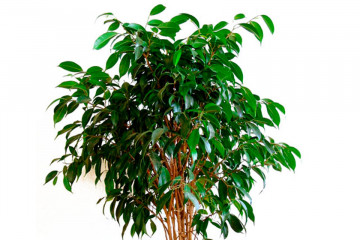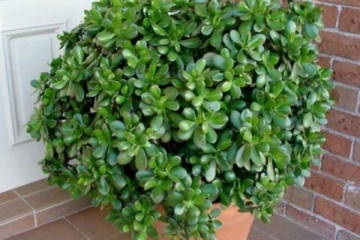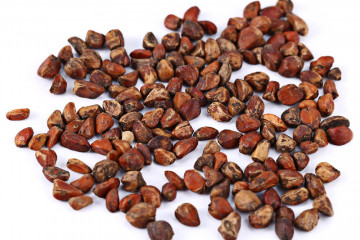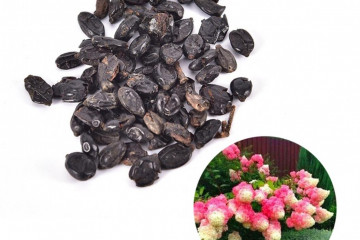Shrub rose in a pot - is it possible to grow at home
Content:
The queen of flowers, the rose, allows you to create spectacular compositions in the landscape design of the local area. But also a beautiful plant can be grown in a pot at home. The task is not an easy one, but even novice florists can handle it if they wish. The main thing is to properly plant and care for.
Shrub rose in a pot - is it possible to grow at home
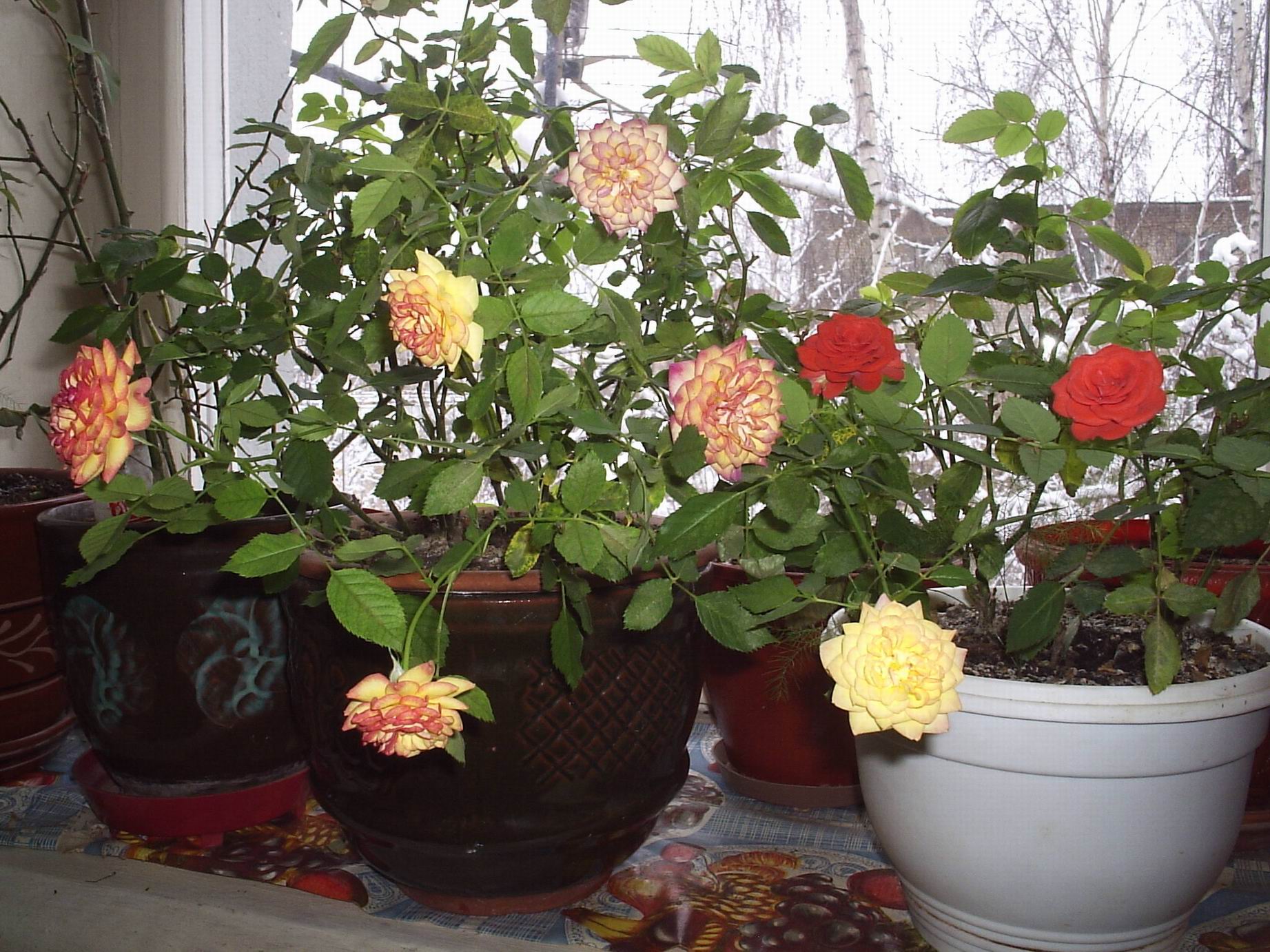
Bush rose in a pot
There are many varieties and varieties of roses for home growing, which will dilute the collection of indoor flowers.
These are compact and miniature plants, not exceeding 50 cm in height. The culture pleases with its flowering from spring to autumn, but only with proper care.
For the successful cultivation of spray roses at home, it is important to adhere to some recommendations:
- Choose a variety that is suitable for indoor keeping.
- When buying, give preference to only strong specimens without pests and signs of disease.
- Create optimal conditions for keeping, so you need to familiarize yourself with the features of caring for a bush rose.
- Protect plants from the invasion of insidious insects, and prevent damage from dangerous diseases.
Observing these simple rules, you can find an approach to a capricious beauty. And she, feeling cared for, will begin to actively grow and develop, delighting with her lush greenery and magnificent flowering.
Popular varieties of spray roses for the home
Shrub rose is represented by a fairly large number of species and varieties that can be grown at home. They are compact in size and fit perfectly into any interior.
Florists note the following crop varieties.
Hummingbird
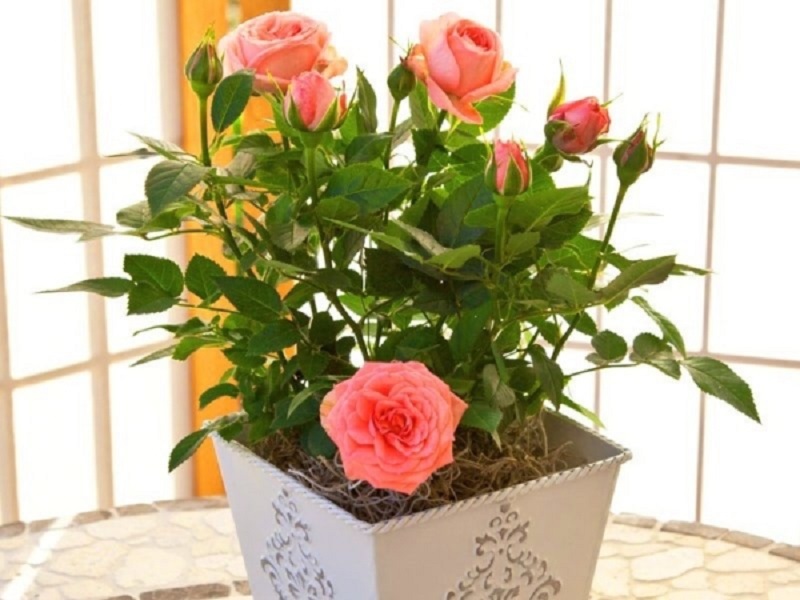
Rose hummingbird
The decorative variety belongs to miniature roses. The bushes of the plant are slightly spreading, up to 35-40 cm in height. Stems are strong, red with brown tint.
The plant is decorated with dark green foliage, leathery, shiny. Attention is drawn to the delicately peach-shaped flowers up to 4 cm in diameter, densely double, with a pronounced tea aroma. The plant blooms profusely, for a long time.
Advantages: winter-hardy variety, resistant to fungal diseases.
Green Ice

Rose Green Ice
The bush is branchy, spreading, its height does not exceed 45 cm. The stems are flexible, they do not change color when lignified. The leaves are dark green, shiny.
The variety is appreciated for its extraordinary color of buds and aroma of morning freshness. White petals with an emerald shimmer will refresh the room. Green Ice is characterized by a mild aroma, which is enhanced by high ambient humidity.
Los Angeles
The Los Angeles variety is especially popular for its amazing flowers. Strong, spreading bushes up to 40 cm in height form straight, smooth, quickly woody stems.
Leaves are dark green, oval, their edges are carved, needle-like. Inflorescences will not leave anyone indifferent with their colors.Flowers with a coral tint in the center, and with a yellow-golden base.
What you should know about home bush rose
Indoor roses are naughty houseplants. Because of what they need not only increased attention, but also compliance with certain conditions of detention.
The choice of soil and pot for planting
The soil should contain the nutrients necessary for the culture, be friable, breathe well and have a slightly acidic reaction.
A mixture of turf, humus and coarse river sand in a ratio of 4: 4: 1 is suitable as a soil. You can replace this composition with a substrate ready for growing roses, which is available in any gardening store.

Soil and pot for a home rose
How comfortable a home rose will feel depends on the choice of a pot for planting.
- Plastic pots are acceptable, but not reliable. The soil in them dries up in summer, which provokes a rapid withering of the buds.
- Pottery should also be discarded - they quickly lose water.
- An excellent solution is a container made of ceramics, wood, as it allows air to pass through well.
The size of the container should not be smaller than the container in which the rose was before transplanting. Before planting, it is necessary to rinse the prepared pot, while it is forbidden to use detergents.
Flowers are moisture-loving plants, but stagnant moisture in the pot can lead to acidification of the substrate or rotting of the roots. Therefore, at the bottom of the container, you need to put drainage, which will serve as expanded clay, pebbles, crushed stone. Place a small layer of sphagnum moss on top. He is able to prevent the process of rotting of the root system. And before pouring the soil mixture into the pot, put a thin layer of sand on top of the moss. Then plant the culture using the traditional method.
Temperature, watering and lighting
If we are talking about such a flower as a home bush rose, caring for it requires compliance with the temperature regime. Otherwise, she may lose her decorative effect, get sick and even die.
The optimum temperature for growing roses varies from 18 to 25 ° C in summer, and from 12 to 15 ° C in winter. All exits outside the permissible ranges will negatively affect the growth and flowering of the room beauty.
At home, it should be moistened as the top layer of the soil dries out. At the time of active growth and flowering, it is important to water the roses abundantly, but without stagnating water in the pan.
It is recommended to spray the bushes daily in hot weather using a spray bottle. In winter, the number of watering should be reduced to 1 time per week, and spraying up to 2 times a week.
For irrigation, use only room temperature water, having previously defended it for 2-3 days.
If the plant is located near a heating device, then the pot should be placed in a pallet pre-filled with wet expanded clay.

Watering the plant
In order for a shrub rose in a pot to have a luxurious flowering, to be strong and healthy, it will need a lot of sunlight. For growing crops, it is better to choose the windows of a room facing south, southeast. As the daylight hours decrease, the plant will need additional illumination with a phytolamp.
When and how to prune a bush rose at home
Pruning a room rose is needed to stimulate the formation of new buds. Planned cupping is carried out in the autumn, by removing old shoots growing inward. You need to trim to a healthy, growing outward kidney. In this case, the cuts must be even.The cut stems can be used for breeding.
In the summer, when active flowering occurs, it is important to remove wilted inflorescences in a timely manner. Cut flowers to the first leaf, removing weak stems.
Carry out the pruning of roses using a sharp, disinfected instrument. The procedure is best done in the evening. If this event is ignored, then the stems will be very elongated, and the flowering will become scarce.
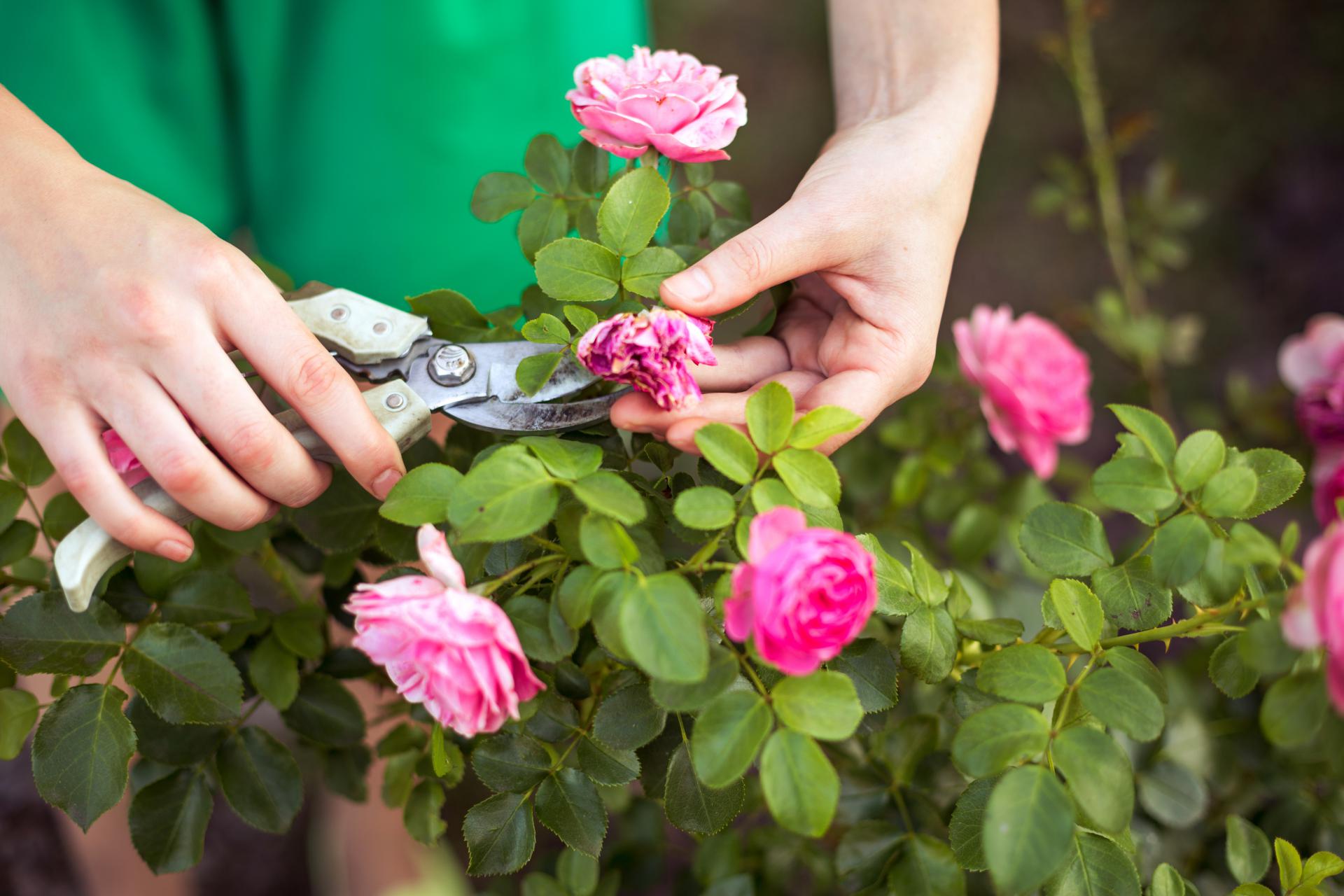
Pruning roses
What should be discarded when caring for a home rose
Keeping a bush rose in a pot at home and caring for it requires not only following a number of rules, but also refusing to take certain actions.
When caring for a plant, it is not recommended:
- watering with cold water;
- repot the plant repeatedly, as you can injure the root system;
- often move the flower pot from place to place, especially during active vegetation;
- contain in the winter months at elevated temperatures.
If the owner observes these conditions, the indoor rose will delight with its beauty, which will help create spectacular compositions for the interior.
Diseases, pests and ways to control them
Pests have also chosen indoor roses. Aphids often settle on the tender tops of the shoots. With a large number of insects, it is better to apply a broad-spectrum insecticide. If it is not enough, then you can collect it by hand.
Also, rose bushes were chosen by spider mites, especially in the autumn-winter time. This pest is capable of destroying a crop in a matter of days. Therefore, it is important to take action promptly by processing with the use of special preparations.
The culture is susceptible to diseases such as:
- Powdery mildew. Its occurrence provokes dampness and stagnation of moist air. The foliage begins to curl and fall off. For treatment, spray the plant with soapy water with the addition of soda. Remove infected areas.
- Rust. Its appearance is signaled by black spots with a border on the leaves of the plant. The disease appears if the ratio of minerals in the soil is disturbed. Treatment with a solution of ferrous sulfate will help to solve the problem.
- Leaf spot. Small dark formations on the foliage indicate the disease. Subsequently, the affected leaf plates begin to turn yellow and crumble. Fungicides will help fight the disease. Mottling occurs with excessive moisture and nutritional deficiencies, so it is important to review the irrigation regime and fertilization schedule.
Surrounding a room rose with care and attention, you can get a beautiful healthy flower with a lush crown and delightful buds that will decorate any interior of the room and give it comfort and sophistication.

